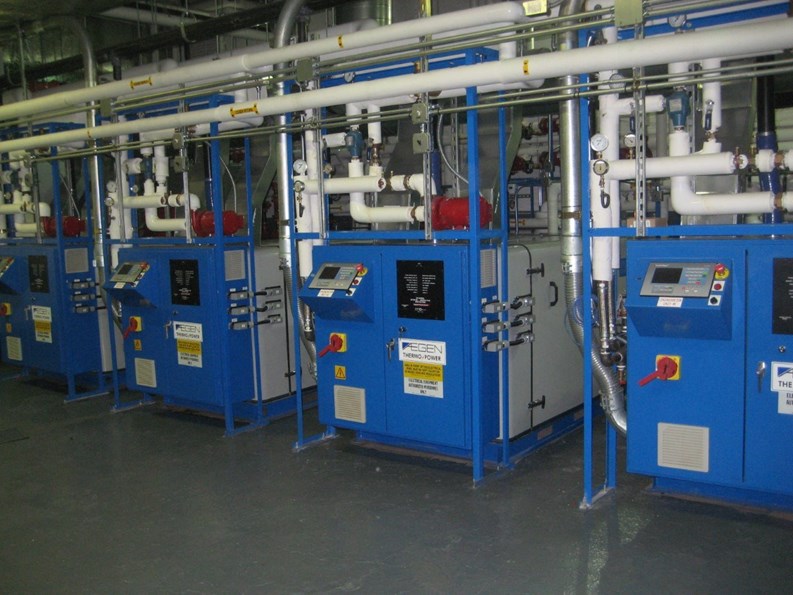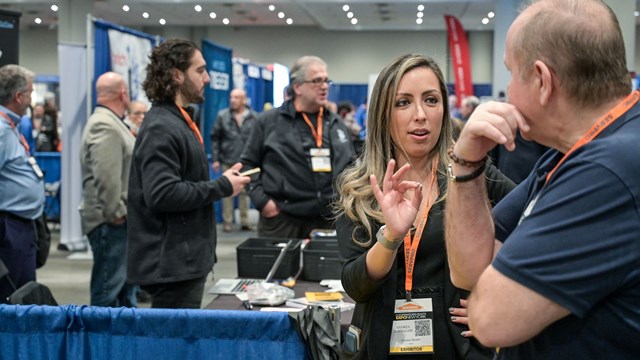With today’s condo and HOA residents much more conscious of their impact on the environment and looking for ways to reduce it, smart boards and property managers are looking to help. Simple tasks like turning down thermostats, shutting off air conditioners during the day, and shutting lights when not in use all help, but there’s more that can be done. More and more buildings and associations are deciding to invest in greener equipment and devices that use less energy and leave a smaller environmental footprint.
“Everyone is cost conscious these days so the most important thing to be looking for is the return on investment,” Scott Raybin, president of The Green Savings Company, a Fort Lauderdale-based company that shows businesses how to save money and help the environment through energy efficient lighting, says. “You need to weigh the return investment versus what they need.”
A Bright Idea
One of the easiest and most common places boards look to save money on energy costs is lighting.
According to Craig Muccio, who runs the Conservation Research and Development program at the Florida Power & Light Company (FPL), compact fluorescent lights (CFLs) typically pay for themselves many times over. These new, high-efficiency light bulbs are not only cost efficient, they’re more convenient because they have to be changed less often.
“Each bulb will save about $50 over the course of its lifetime and the simple ones only cost around $2,” he says. “Some CFL bulbs for special indoor and outdoor applications are more expensive, but CFLs deliver very high value for the investment.”
LEDs are certainly an option as well, but payback on the investment can be very long in some applications and FPL does not offer an incentive for LEDs at this time.
“The large variety of CFLs and LEDs mean they can be used in many common areas – walkways, offices, elevators, hallways, parking garages and lots, fountains, pools and exit signs are just some examples,” Muccio says. “In some places, like common area restrooms, mail rooms, reception rooms, even trash chutes, they can be paired with occupancy sensors to further reduce energy use.”
Raybin says that while going all-LED might look great, the return on investment for an HOA will take a lot longer, so it might not be the best option. “Fluorescent might be the better choice, because it will give you a better ROI,” he says. “Every association is going to have its own thoughts on this.”
Boards and managers should always check local codes because some lighting is required to be on 24/7.
Even with traditional lighting technology, some choices are more efficient than others. For example, associations may consider changing out parking garage or outdoor parking T12 fluorescent or metal halide lights to T8 or T5 fluorescents or CFLs.
A great place for an association to start for any energy efficiency effort is with a free, FPL Business Energy Survey or “BEE,” where an FPL efficiency expert audits your energy use and delivers a free, customized report with energy savings solutions targeted to your unique energy needs. Visit www.FPL.com/BEE to learn more.
EnergyStar Appliances
There’s a large variety of EnergyStar rated appliances and equipment out there and often they’re not more expensive or not much more expensive than any others. When considering if an appliance or piece of equipment is worthwhile for a multifamily building or association to invest in, each HOA will have different criteria for their purchases and upgrades.
“The key factors are the monthly energy savings, any incentives that are available and how long it will take to recover the cost of the improvement,” Muccio says. “Do the savings in the long run offset the upfront costs? The fewer years in the payback period, the better.”
Florida Power & Light has resources to help customers understand the technology and potential savings and does a lot to ensure the technology is proven and that the energy savings claims can be substantiated.
“We do testing and research and have lots of experience,” Muccio says. “Our energy experts can help HOAs and boards understand what makes the most sense for them.”
Raybin adds that with so many rebates being offered and financing options at record lows, now is the best time to invest in these energy-saving appliances.
“From my experience, associations are pennywise and pound-foolish. I’ve gone to so many different places to retrofit the lighting and let’s say the capital outlet is $10,000, the return on investment may be six months, but they don’t even look at that,” he says. “There are companies out there that will finance the whole project for them so they are getting the benefit without affecting the profit, but they don’t take the time to find out.”
H20 Savings
A large shared cost for condos and HOAs, especially in South Florida, is the shared pool and/or hot tub.
According to Remy Baker, a representative of Commercial Energy Specialists, Inc. in Jupiter, which provides water treatment programs for thousands of institutional and commercial swimming pools, variable speed pool pumps can save between 75 and 90 percent of electricity use compared to regular swimming pool pumps, which run at higher rates at all times.
“Variable speed pumps can run at higher rates when needed, but at slower speeds much of the time, cutting the speed in half and reducing the energy use to one-eighth,” she says. “Heat pump water heaters for pools are newer technology and they are readily available. They can heat a pool for about half the cost of a traditional water heater.”
Heat pump water heaters are also available for common laundry facilities.
Looking Up
According to Kay Swaysland, administrator of Swaysland Professional Engineering Consultants, Inc. in Fort Lauderdale, anytime an HOA is considering roof work, reflective roofing should be evaluated as part of the job.
“Even if the roof is in good shape, you can still put a reflective coating on it, which will help cool the building and reduce the energy use,” she says. “Choosing a white, highly-reflective membrane can increase the reflectance of the roof to 80 percent or more, which helps save on the overall cost of HVAC usage. FPL offers incentives for reflective roofing.”
Running Hot and Cold
If you are replacing a rooftop air-conditioner on a large community building, like a clubhouse, Muccio says you should consider one with energy recovery ventilation (ERV). An ERV system helps cut energy costs by as much as 10 percent per year by using the air conditioned building exhaust air to pre-cool the fresh air you are required to bring into a commercial building.
Demand control ventilation (DCV) is also an option for large buildings. If you have air conditioning on all the time, you must ventilate the space with a certain amount of fresh air. A DCV system monitors the carbon dioxide level in a space and lets you slow down the flow of fresh air within safe levels.
Chillers with variable speed drives are also available or existing chillers can be retrofitted with variable speed drives. You can reduce the speed ranges for fans and pumps by 25 to 30 percent when an area is not in use. When you have an event or an area is in use, you can run the system at its full speed.
“Sometimes simple fixes can make a big difference. Programmable thermostats in rooms that are not constantly in use can lead to cost savings,” Muccio says. “Set correctly and protected with a lock box, these devices can help reduce an association’s electric bill.”
The Big Jobs
Some boards may consider large-scale eco-friendly practices such as the installation of something like solar panels, but this could be a hard sell for the residents who will ultimately be fitting the bill on these expensive green technologies and practices.
Solar photovoltaic panels normally have a lengthy payback period but FPL does have a solar water heating and photovoltaic pilot incentive program.
“Each HOA will have different criteria for their purchases and upgrades, but the key factors are the monthly energy savings, any incentives that are available and how long it will take to recover the cost of the improvement,” Muccio says. “What boards need to ask themselves it, ‘Do the savings in the long run offset the upfront costs?’ The fewer years in the payback period, the better.”
Money Matters
Just because something is considered green and environmentally friendly doesn’t mean it will automatically cost more. Swaysland says its technology specific.
“When we look at technologies, we don’t always look at cost first, we look at the life-cycle costs. In the end, there should be sufficient energy savings that make the total cost less,” she says. “ A CFL light bulb, for example, may cost three or four times as much as a regular light bulb, but it lasts 10 times longer. Which is the higher cost?”
Muccio adds that you should never overlook the “low cost/no cost” ways to reduce your energy bill.
“Some of these technologies do cost more upfront, but the energy savings over the life of the equipment and incentives, when they are available, have to be factored in,” he says. “You should investigate available incentives that will help defray the cost.”
FPL offers a number of incentives for energy efficient projects at www.FPL.com/business. For government incentives, visit www.Energystar.gov. HOAs and boards should also consult their own tax attorneys for possible savings.
Keith Loria is a freelance writer and a frequent contributor to The South Florida Cooperator.






Leave a Comment